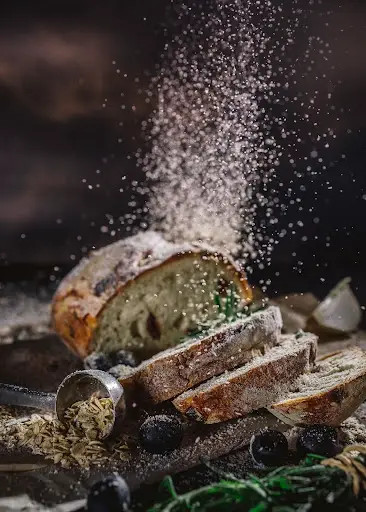7 Different Ways Yeast Is Used To Produce Foods And Beverages
Yeast performs pivotal roles in crafting various foods and beverages we enjoy daily. While many are aware of its need in baking and brewing beer, there’s so much more to this humble fungus!
Whether enhancing the rich flavors of chocolate, contributing to the sharp tanginess of vinegar, or forging unique flavors for yogurt—yeast has always been part of our culinary journey. Join us as we explore seven fascinating ways yeast helps create a multitude of our delicious staples!

7 Ways Yeast is Used to Produce Foods and Beverages
We often underestimate the roles multiple strains of yeast play in our everyday lives. Let’s explore 7 different ways yeast is put to use in the fascinating world of culinary production.
1. Bread Making
Baking bread at home is a rewarding experience. One fundamental ingredient to ensure you bake the perfect loaf every time is yeast. As yeast comes into contact with the sugars in your dough, it ferments them. This fermentation process produces carbon dioxide gas and alcohol.
The gas gets trapped within the dough, causing it to rise and expand. The result is a beautifully fluffy bread with a perfect crumb, all thanks to the reaction of yeast during the baking process.
2. Beer Brewing
Yeast plays a crucial part in beer production, specifically Saccharomyces cerevisiae, which is commonly used for ale brewing. The yeast consumes sugar from malted barley, with alcohol and carbon dioxide as by-products. That’s why your favorite pint has its delightful bubbles!
However, there are other yeast alternatives to Saccharomyces cerevisiae, including thiolized yeast. The role of thiolized yeast is particularly important in fruit-based or smoothie beers.
3. Cheese Production
Creating cheese is a fascinating process, shaped intricately by microbiology. Cheese production often involves the use of yeast alongside beneficial bacteria and molds. Yeasts contribute to the fermentation of lactose in milk, producing lactic acid and adding distinctive flavors to the cheese.
Besides this, yeasts are also used in surface-ripened cheeses like camembert and brie. A hint of yeast helps develop the robust and creamy flavor that makes these cheeses so desirable.
4. Chocolate Production
The next time you indulge in a piece of chocolate, consider the role that fermentation plays in its taste and quality. This process is essential for developing the flavors in chocolate. Harvested cacao beans are placed in large bins to ferment with yeasts found in the environment.
These yeasts go to work converting sugars within the beans into alcohol. This initial fermentation step is crucial as it breaks down bitter compounds present in darker chocolates.
5. Vinegar Production
Vinegar is produced through a two-step fermentation process that begins with yeasts. In the first step, yeast ferments natural sugars into alcohol in an anaerobic environment. Then, in the second stage, specific bacteria convert this alcohol into acetic acid under aerobic conditions.
This acetic acid gives vinegar its characteristic sharp flavor. From your favorite salad dressing to cleaning solution at home, remember that yeast plays a significant role in creating vinegar.
6. Kombucha Making
When it comes to creating that fizzy, tangy drink known as Kombucha, yeast performs an essential role. Alongside beneficial bacteria, yeast forms a “Symbiotic Culture of Bacteria and Yeast” or SCOBY. This SCOBY ferments a sweet tea mixture, converting sugars into alcohol.
The bacteria then convert this alcohol into acetic acid, giving Kombucha its distinctive sour taste. Meanwhile, the carbon dioxide released during fermentation adds the fizz we love.
7. Yogurt Production
When producing yogurt, milk is inoculated with lactic acid bacteria (yeast), which ferment the lactose sugars into lactic acid. Although yeast isn’t traditionally involved in yogurt-making, some types, like ‘yogurt yeast’ (Kluyveromyces marxianus), can ferment lactose.
In some special formulations, yeasts are used alongside traditional bacterial cultures to enhance the fermentation process and add unique flavor profiles while enhancing its probiotics.
In Conclusion…
From making bread rise to brewing the perfect pint, yeast plays a remarkable role in our kitchens. As we’ve explored, its significant contribution extends far beyond these common uses. Its influence on flavor enhancement in foods like cheese, chocolate, and even vinegar.
Pizza Stone Dough Roller Slicer Sauce
We exclusively bring you lists of some gadgets related to food, drinks, beverages for your home, kitchen, picnic, parties and more. Below are highly reviewed Pizza Stone Dough Roller Slicer Sauce on sale from Amazon store. ENJOY 🙂- NO EFFORT PIZZA CUTTER – Stable vertical pressure and large cutting wheel for easy and perfectly controlled cutting process.
- GET THE PERFECT SLICE IN ONE CUT – This pizza cutter will leave you shocked with how easy it is to get a nice, clean cut through your pizza.
- COMFORTABLY FITS IN THE PALM OF YOUR HAND - This pizza slicer's unique design easily fits in your hand and also in your cutlery drawer.
- PROTECTIVE BLADE GUARD FOR EASY STORAGE – This pizza cutter wheel comes with a blade guard to keep your cutter securely stored away when you’re not using it.
- DISASSEMBLES FOR THOROUGH CLEANING AND DISHWASHER SAFE – Take it apart in 3 simple steps and put it in the dishwasher for thorough cleaning.
- EXCELLENT TEXTURE AND FLAVOR: Perfect for New York Style pizza or rolled thin and crispy, Weisenberger’s creates a deliciously chewy dough with enough strength to hold your favorite toppings.
- HIGH QUALITY INGREDIENTS: Weisenberger mills the flour used to make the pizza crust mix on site, as it has since 1865, to create a high quality and delicious pizza flour.
- SIMPLE TO MAKE: With two types of flour, salt, and yeast combined in perfect proportions, Weisenberger Pizza Mix is easy to use: just add ½ cup hot water, let rise, and bake.
- CONVENIENT SIZE: One 6.5 oz package makes a mouth-watering 12 inch pizza, or a 14 inch thin crust perfect for homemade pizza night! This listing is for a 12 pack.
- MAKE MORE THAN PIZZA: Weisenberger Pizza Crust mix is versatile enough for more than pizza. Create delicious breadsticks, calzones, cinnamon rolls, flatbread, and more!
- Measures: 7.25" x 4.5" x 1.25" / 18.5cm x 11.5cm x 3cm. Large roller: 4.125" / 10.5cm. Small roller: 2.5" / 6cm
- To help achieve a perfectly cooked crust, it needs to be of a uniform thickness. The Norpro Pastry/Pizza Roller is the perfect 2-in-1 tool for pies, cookies and pizza dough!
- The large roller smoothly rolls out dough, creating a uniform crust. Easy to use on your pastry mat/cutting board or directly in the pan!
- The small roller makes it easy to fill in dough to the edges, smooths edges and sides, and ensures uniform depth around the inner rim of the pan.
- Also ideal to crush nuts, crackers, cookies and bread crumbs!
- BEAT THE HELL OUT OF FORK – So much easier, faster and more fun than using a fork. Also not deep like a fork. Docking is the process of creating small vents in dough to prevent it from blistering and rising in large, uneven pockets during baking. The docker does take the guess work out of docking, however, since you don’t need to wonder whether you’ve added enough holes to your dough or whether it is evenly marked.
- TIME-SAVER AND LAST FOR YEARS – A dough docker is one of the stranger looking tools that you might find in your kitchen. Dough dockers are used to knock air out of your dough once it has been rolled. The dough docker will create numerous puncture holes in the dough to ensure there are no air gaps in your pizza base once it is cooked. Taking the 10 seconds to dock your dough prior to baking could save you several minutes later when it comes to popping bubbles throughout the baking process.
- NOT ONLY FOR RESTAURANT BUT ALSO FOR HOMEMADE – Generally this commercial pizza dough roller is used in the commercial pizzeria restaurant because of its speed of use. This could also be used for the homemade pizza gourment. This docker is used to easily and quickly allow bakers to dock dough just by rolling over the spiked portion back and forth with firm pressure over dough.
- PIZZA, PASTRY, TART, NAAN, PIE, FLATBREAD BUT NOT COOKIES – Pizza dough, Pastry dough, tart dough, naan bread, flat bread and pie crusts are some of the most commonly docked dough because bakers typically want them to bake as evenly as possible (particularly if there are toppings or fillings involved) in the oven. But for cookies it is a little big.
- BUY ONE GET THREE – Buy it right now, you will not only receive a dough docker, but also a pizza cutter and a pastry scraper within a beautiful gift package. You can use them all in the whole process of making pizza. Firstly, cut the dough with pastry scraper, and then roll dough docker on the dough. Lastly, cut the pizza with pizza cutter. They are also thoughtful gifts for lovers of baking.
- Size: The pizza stone measures 15" X 12" X 0.6", Golden thickness(15mm), weighs up to 6.7Lbs. Come with a free pizza peel board(11" X 15.6" x 0.35")
- Material: Made of 100% all-natural FDA-safe Cordierite stone, it is no smell and excellent thermal shock resistance. Heat-safe up to 1112°F(600℃). It could distributes heat evenly for optimal cooking, much more efficient than metal
- Multipurpose: Besides baking the fresh or frozen pizzas, this pizza stone set can be used for many other culinary explorations. Perfect for bread, cookies, stuffed calzone at home
- Clean: Scrape off any excess food with a spatula before clean. When the stone has cooled, run it under warm water while scrubbing with a brush. Never use soap or detergent on a stone, which will leave a soapy aftertaste
- Notes: In order to get a crispy pizza base, you must preheat pizza stone before making pizza; stains are Normal, the darker it looks, the better it cooks; do not use any soap or detergent by clean, otherwise you will get a soapy tasting pizza








